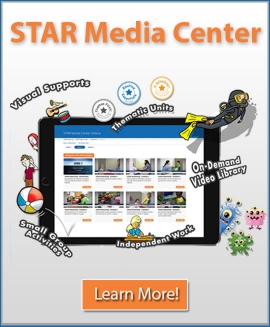Learning and Maintaining Appropriate Social Behaviors
Are you the educator who could sit at a table with students and teach through discrete trial all day long? Do you flourish within the structure and predictability of the cues, the specific responses, and the data collection procedure? If you are screaming yes in your head, or perhaps audibly for your neighbors to enjoy, then you feel similarly to the author of this newsletter. I LOVE discrete trial for probably the same reasons that a lot of our students do, and if left unchecked, I might get a little carried away with it and forget to use other important strategies as much as I should. How do I manage this? Like all educators, I have to put the interest of my students first and maximize their daily schedule with teaching strategies that will help them succeed in their schools, homes, and communities.
Let’s take a moment to chat about PRT (pivotal response training). When we use the strategy ourselves or teach others to use it, our primary goal is to develop it as our natural interaction style with our students. We have to teach our students how to “learn in the moment,” and attend to those pesky environmental cues that they can easily overlook. When we use these teachable moments, we give our students opportunities to show us what they have learned in DT in a functional context.
Consider a student at Level III who is working on expressive labels for prepositions in discrete trial. As an educator, your next task is to decide how you are going to make those prepositions useful or meaningful for your student to help them generalize the concept. If you are like me, you think about your next PRT session and review the student’s language and play goals that are conveniently posted in the PRT area…wink, wink! The student is working on answering wh- questions and following multi-step directions, and has interests in farm houses, food/picnic sets, and stuffed animal hamsters (the non-taxidermy type). Immediately, ideas to incorporate prepositions flood your brain but you write some of them down to provide the scaffolding you need to facilitate a fantastic PRT session. You also realize, unlike DT, that you are not looking for a specific response, but rather a variety of appropriate responses that correspond to provided cues. So, if I put the hamster beside the apple that also happens to be inside the farm house, I will accept a variety of responses that appropriately correspond to the cue of “where is the hamster?” These may include “inside house,” beside apple,” “between apple and x,” you get the picture. As long as it is appropriate and relevant, I will happily accept it.
Remember that as student responses may vary, the reinforcement you give should vary as well to encourage higher-level responses. We are always trying to reinforce good attempts to help keep frustration down, but we also have our eye on emerging skills. Consider a student at Level I who walks between the worlds of sound pairing and initial verbal imitation. You have a spectacular snack routine going and you use this as an opportunity to work on expressive language. You provide the verbal cue of “grape,” the student uses a sound pair (“uh”) to request the grape, so you happily reinforce with half of a grape. The next time you cue “grape,” the student says “gruh,” and you give a full grape to show how happy you are with the initial verbal imitation. Over time, this student will be more likely to engage in the verbal imitation if the reinforcement is bigger, better, and consistent.
If you are like me, be courageous and step outside of your comfort box! Dive in to the PRT method and watch with excitement as students excel in the areas of language, play, and social interaction.


